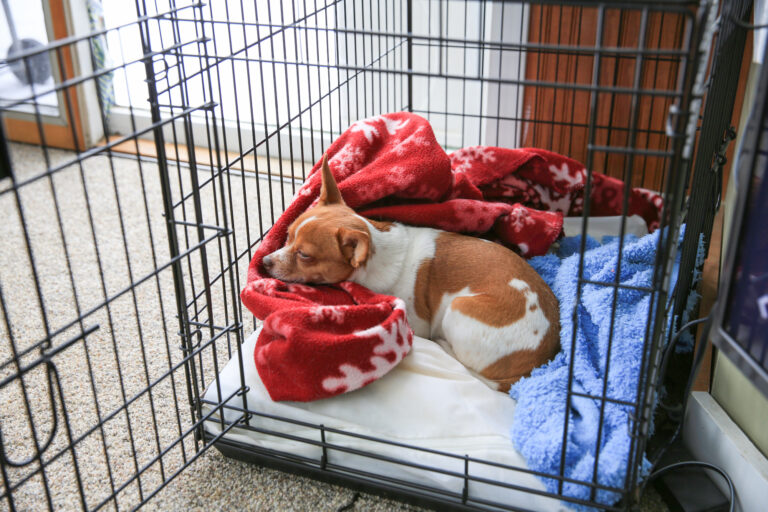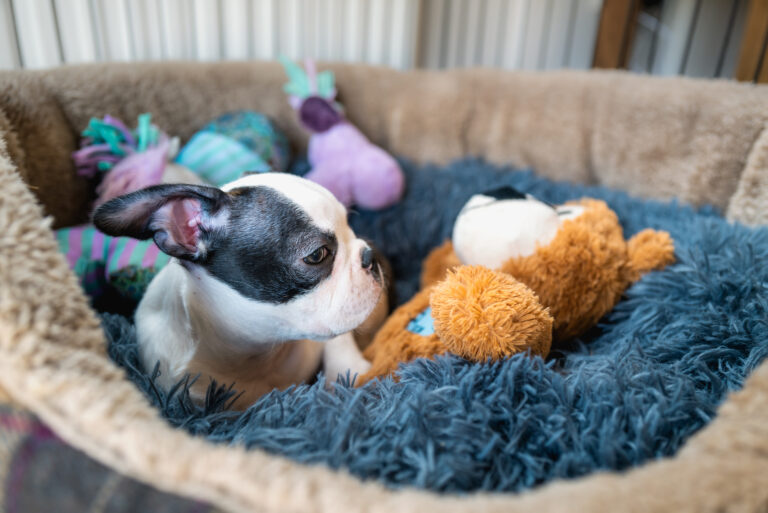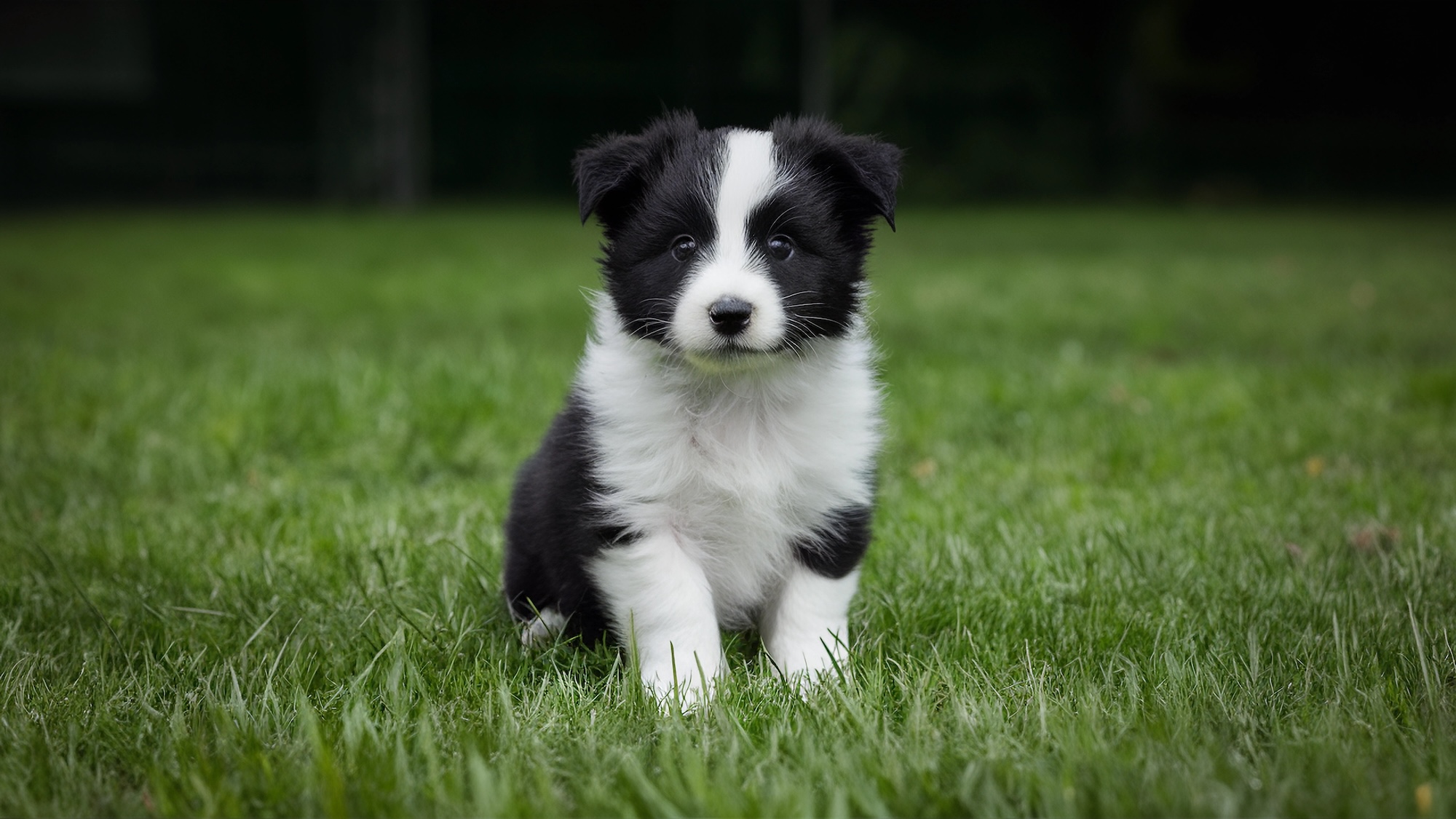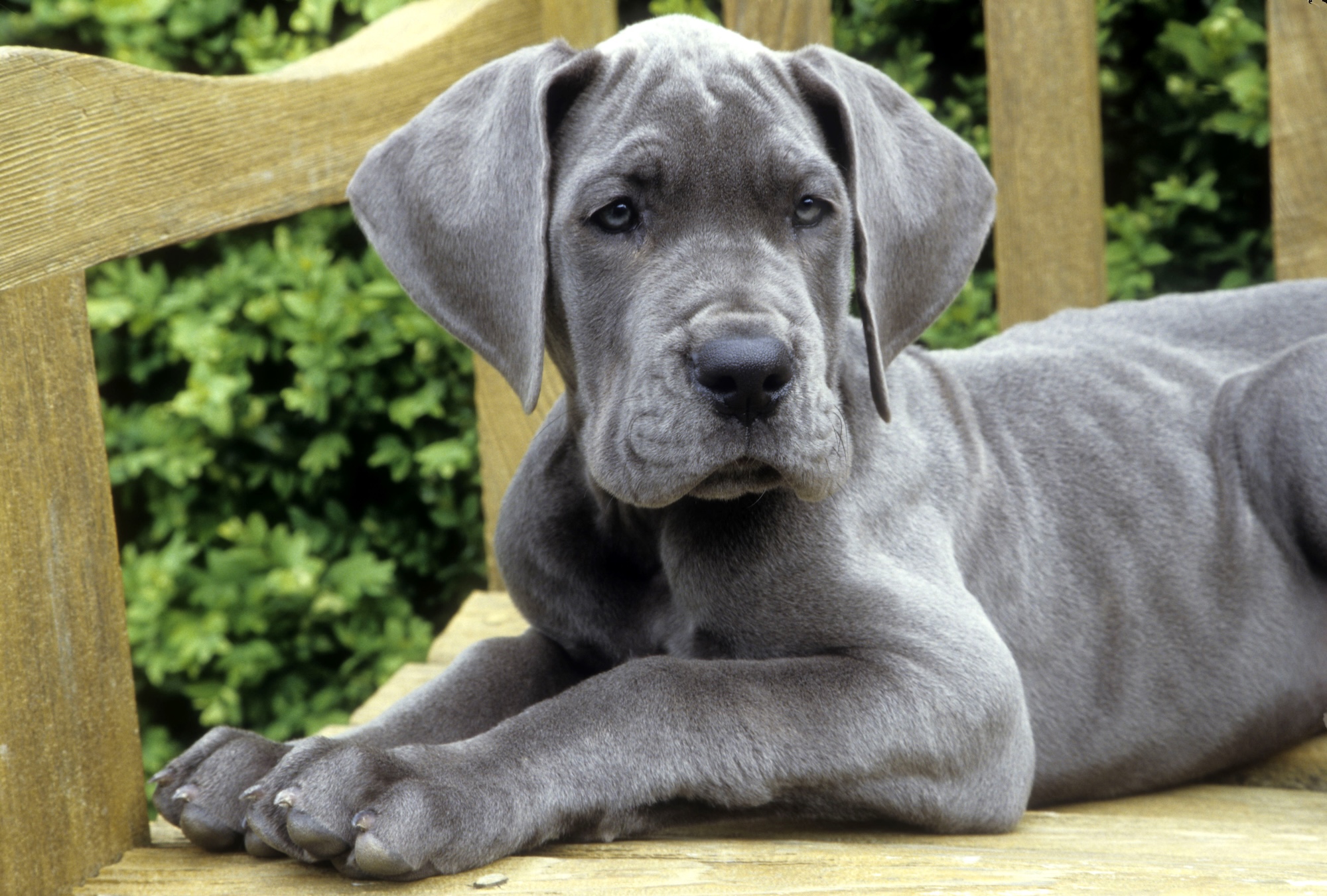A crate is like the Swiss Army knife of training a puppy—a simple tool that does many useful things. It assists in teaching good potty habits because dogs don’t normally want to soil an area where they spend time living and sleeping. A crate also helps your puppy learn to spend time happily alone, thereby staving off separation anxiety; it’s a good travel companion, giving your dog a home away from home; and it simply provides somewhere to chill when your pup needs it.
But all these good things are unlocked only if your puppy or dog views the crate as a happy, safe place.
To achieve that goal, your puppy should spend time in the crate while you’re home, and associate the space with good things. It’s important to avoid treating going into the crate as punishment. Introduced or used improperly, a crate may simply be seen by your puppy as a place where they’re going to be alone, and a signal that you’re leaving.
Here are some key tips for crate training your puppy, and making the crate their comfort zone.
Get the right crate
There are a few different crate options, including fabric, plastic, and wire-enclosed models. Pick the one that you think works best for your puppy, or seek advice from a trainer or vet. Some dog owners like plastic crates for portability and because they create the most “den”-like enclosure. However, we recommend wire crates as the best all-round pick as they are collapsible, easy to clean, and they allow you and your puppy to see each other. If you wish to create an enclosed or dark “den,” simply put a blanket or large towel over three sides of the crate.
Ensure that the crate is the right size for your puppy. Crates should be large enough so that your dog can sit, lie down, and turn around comfortably, but not big enough that they have room to turn one section of the space into a bathroom spot. A size-adjustable crate with a divider works well for growing puppies.

Make the crate cozy
Make your puppy’s crate comfy with towels, blankets, or a bed—experiment with what your dog likes.
Location, location, location
Place the crate in a centrally located area of your house, not somewhere where the dog might feel isolated. Especially in the early stages of training, it’s a good idea to have the crate in a room in which you’re likely to be spending a lot of time throughout the day.
Crate training steps
Some dogs will naturally take to the crate right away. Some won’t, and will need some encouragement.
When starting out, use a happy voice when guiding your dog into the crate. Don’t force them to go in—again, the crate shouldn’t feel like punishment. Don’t interrupt fun play time and banish them to the crate and disappear. When starting out with training, look for times when they’re calm to introduce them to the crate.
Start by offering treats and toys in the crate—picking extra-special things that they ONLY get while in the crate helps your puppy form a positive association with being there. Throw treats into the crate while the door is open, allowing your pup to go in and out at first. Try tethering a favorite toy to the back of the crate, or put a treat-filled toy or snuffle mat—something that takes some time to “finish”—in the back of the crate.
You can also start feeding meals in the crate, first with the door open. If they’re happy being in the crate, put the bowl at the back. If they’re hesitant, start with the bowl near the open door.
If they’re happily going in and out of the crate, try installing a word or phrase as a cue. When your puppy enters the crate after a treat you’ve thrown, say your chosen word or phrase (it can be “go to bed” or “crate time,” or whatever works for you).

After several repetitions, try pointing into the crate and saying the phrase without the treat. When they go into the crate on command, give them a treat and ample praise.
Once they’re comfortably eating meals in the crate, try offering meals, treats, or toys in the crate with the door closed. Slowly increase the time they spend inside with the door closed. At first, keep this time short and sweet—just step away from the crate for a few seconds. You can also try feeding treats through the wire while they’re in the crate with the door closed.
As you progress, sit nearby for longer periods of time, then leave the room briefly. Don’t go too fast during this stage. Avoid letting your dog out when they’re whining, to prevent them learning that whining or barking gets your attention and gets them freedom. Conversely, praise your dog and reward them with treats when they’re spending time happily in the crate.
Ultimately, when your puppy is comfortable enough to spend longer stretches of time in the crate, have them stay there when you are not playing with or otherwise supervising them. But remember, the crate isn’t a “set it and forget it” solution. No dog should spend prolonged stretches of time in a crate–they need plenty of outdoor time, as well as mental and physical stimulation while in the house.
Crate training requires some patience—you may have to go back a step or two at certain points. But if you can get your puppy to view this space as their happy place, instead of just associating it with being alone, it’ll make both of your lives happier in the long run.
Read more about potty training your puppy.




